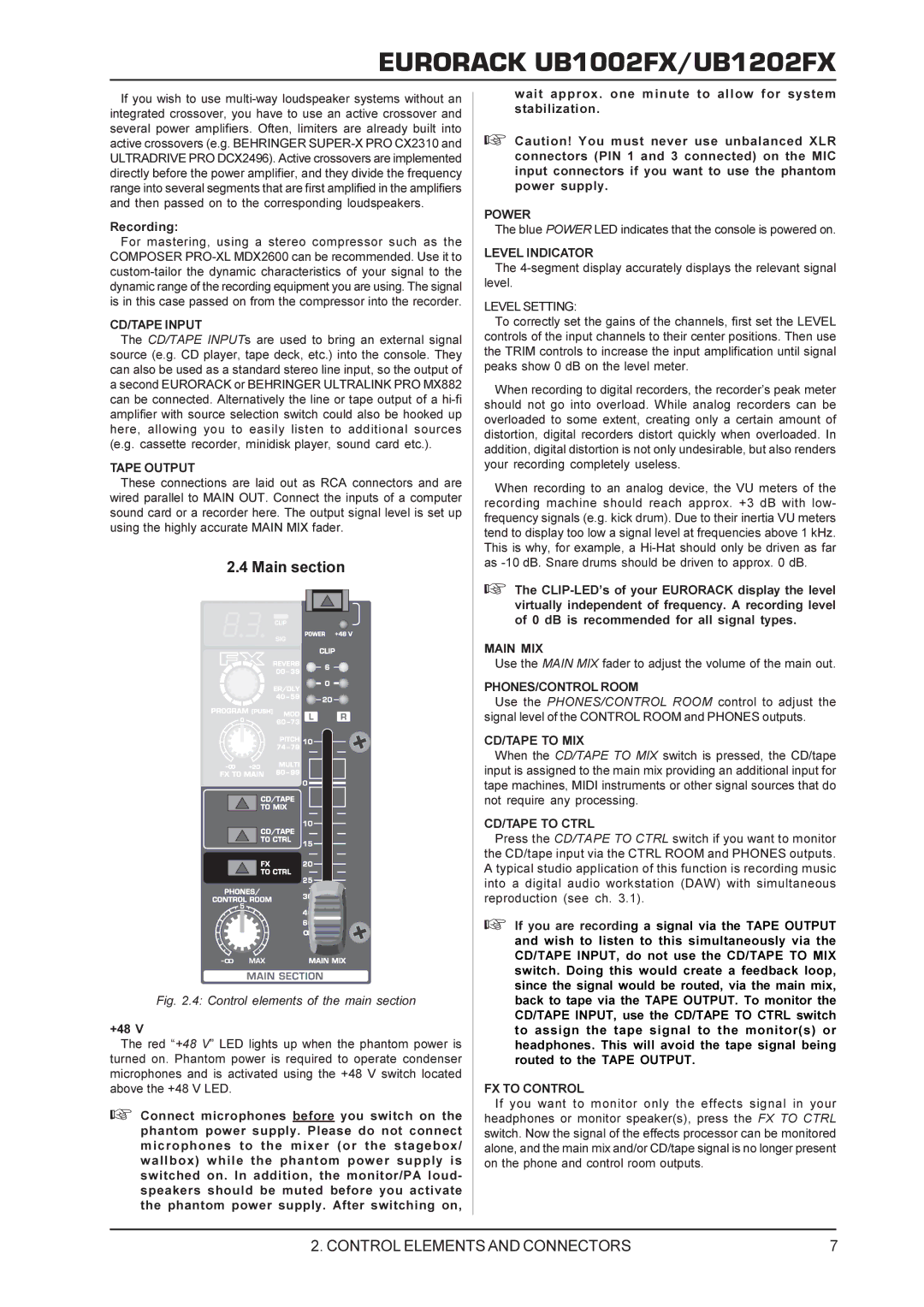UB1202FX, UB1002FX specifications
Behringer is well-known for producing budget-friendly yet powerful audio equipment, and their UB1002FX and UB1202FX mixers are prime examples of this commitment. Both models cater to musicians, podcasters, and sound engineers looking for compact solutions without compromising on sound quality.The Behringer UB1002FX is a versatile 10-input mixer equipped with built-in effects. It features two low-noise, high-headroom mic preamps augmenting the audio quality for vocal and instrumental applications. With three-band EQ on each channel, users can sculpt their sound easily, while a 24-bit digital FX processor offers 100 studio-grade effects, including reverb, delay, and chorus, allowing for creative sound experimentation.
This mixer is designed with practical connectivity in mind. It includes stereo inputs, a dedicated tape input and output, as well as auxiliary sends per channel, ideal for routing to external effects devices or monitors. The UB1002FX also boasts a headphone output with a separate level control, providing a useful monitoring option during live performances or recording sessions.
The UB1202FX is a step up, offering 12 inputs and additional features that enhance its functionality. Like the UB1002FX, it features low-noise mic preamps and three-band EQ, but it also includes an advanced four-channel stereo input capability that allows for diverse input sources.
One of the standout features of the UB1202FX is its built-in DSP effects processor, which offers a rich palette of effects meant to cater to a variety of musical styles and applications. The total number of effects onboard allows for a greater scope of creative possibilities during both live performances and studio sessions.
Both mixers are designed with rugged construction, making them reliable even under demanding conditions and frequent use. The user-friendly layout ensures that navigating through channels and effects is intuitive, making it suitable for beginners and experienced engineers alike.
In terms of connectivity, both models feature balanced XLR outputs, enabling professional-grade connections to PA systems or recording interfaces. The compact size of the UB1002FX and UB1202FX makes them ideal for mobile setups or smaller venues, providing portability alongside robust performance.
Overall, the Behringer UB1002FX and UB1202FX mixers offer exceptional value for their price, with features and sound quality that present a compelling option for anyone in need of a reliable audio mixing solution.

